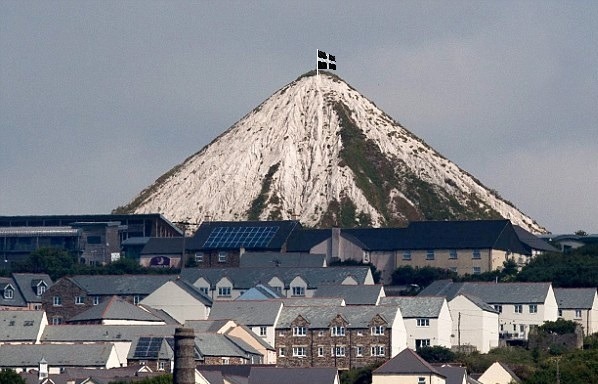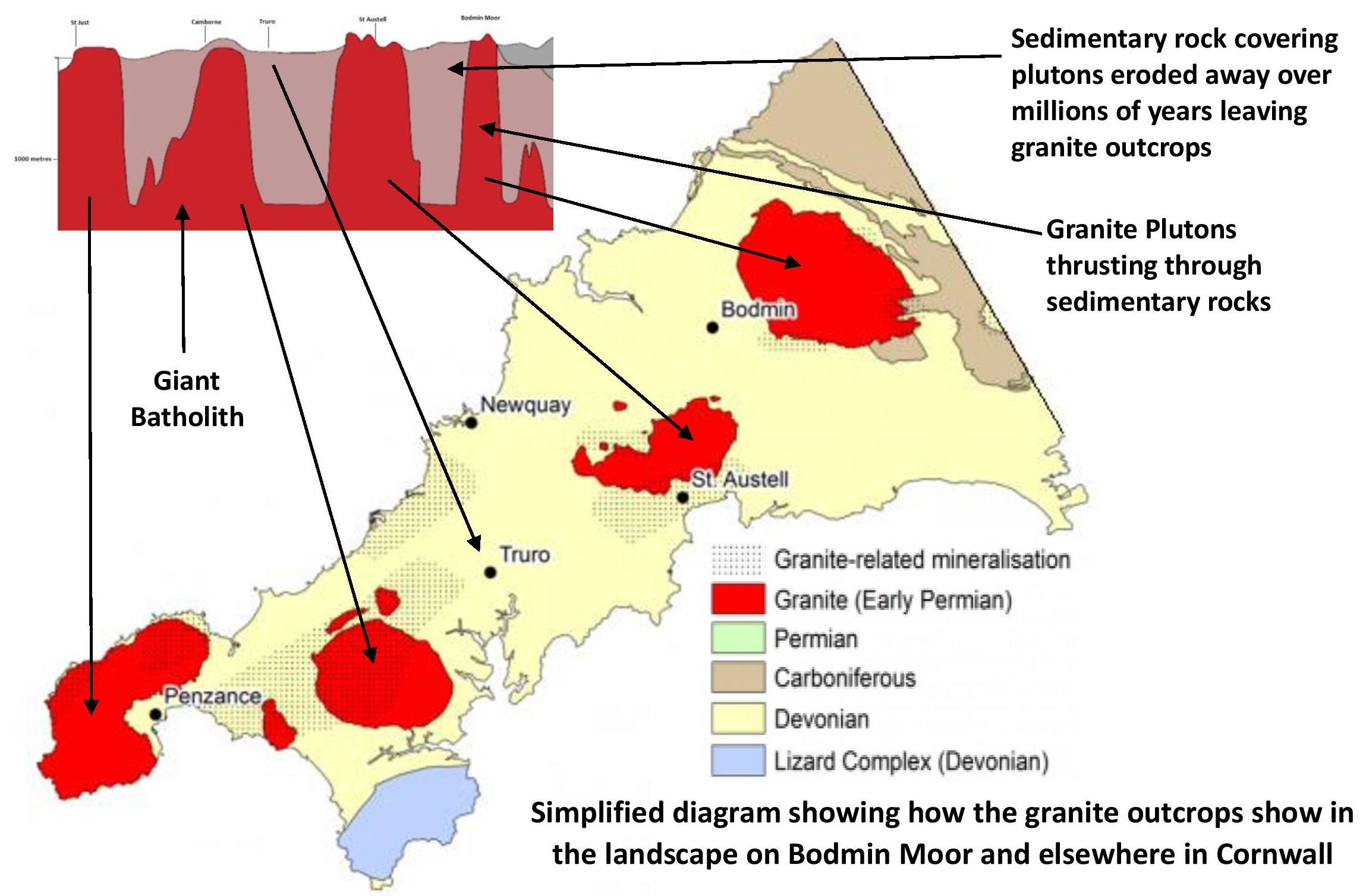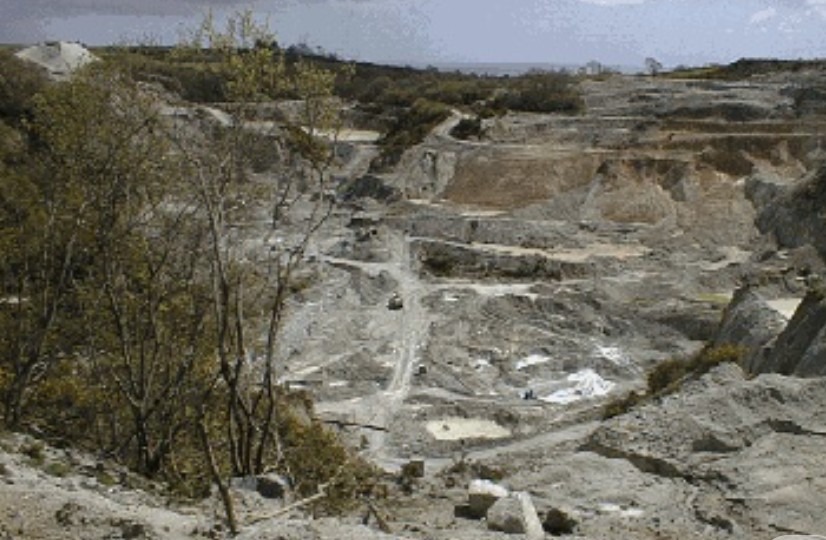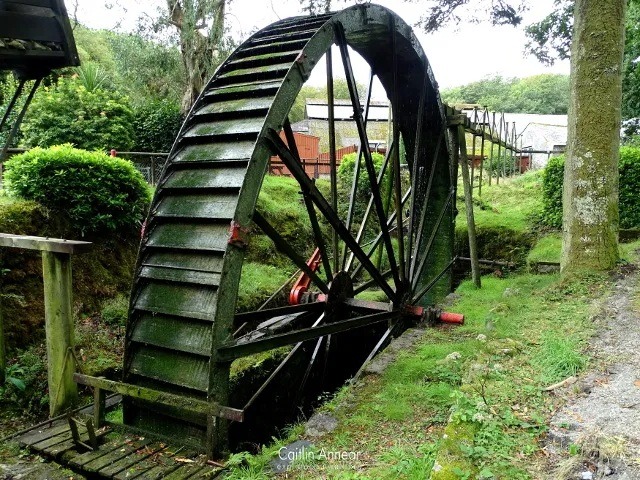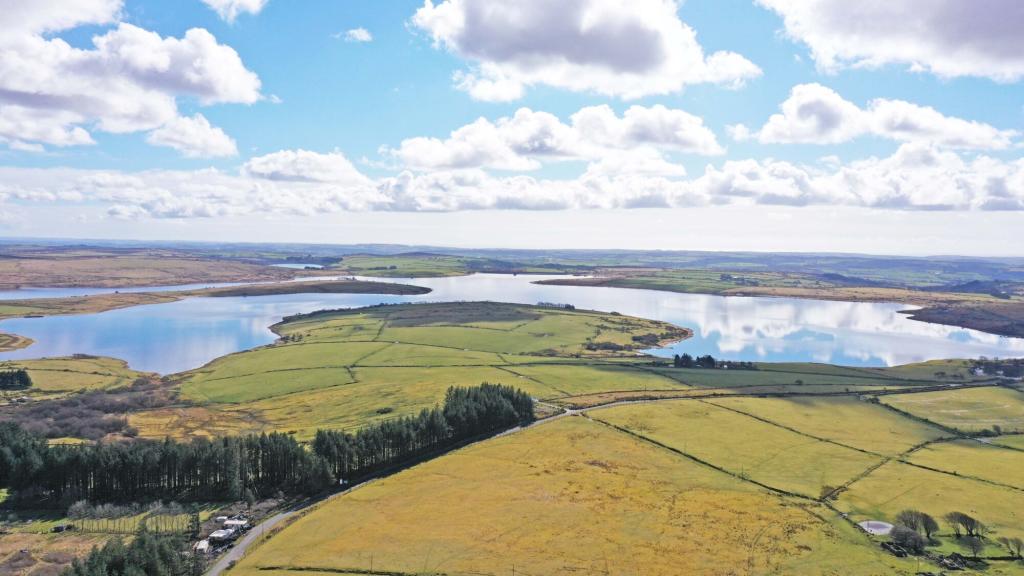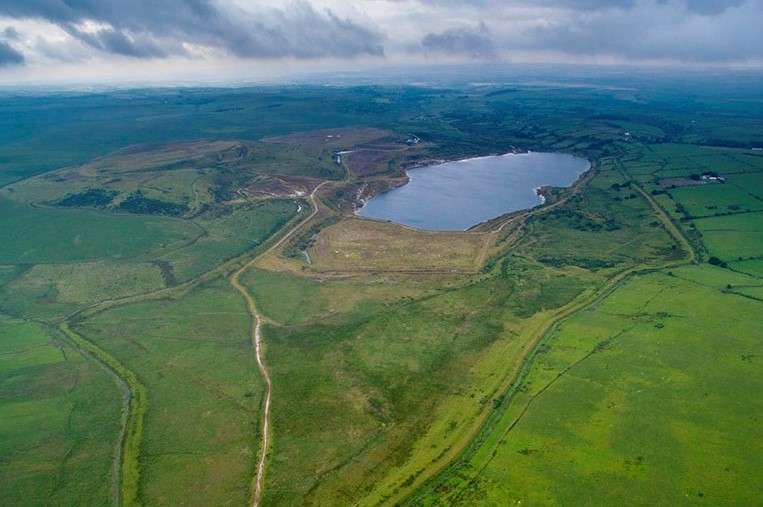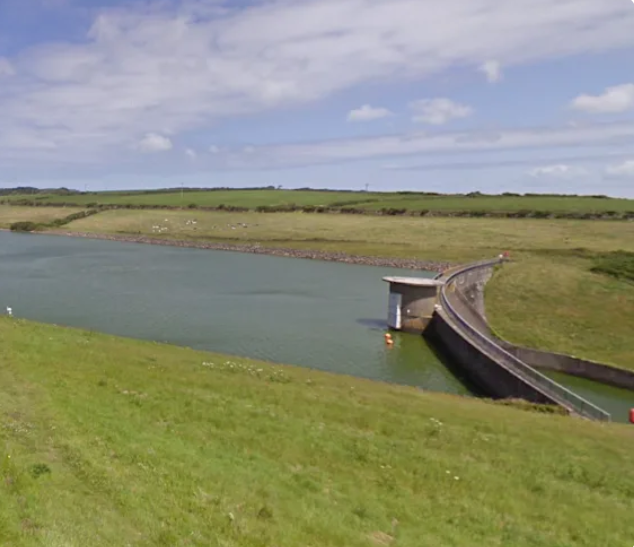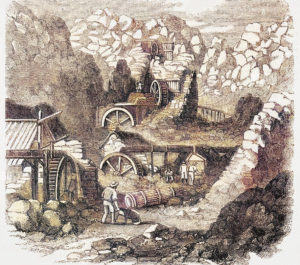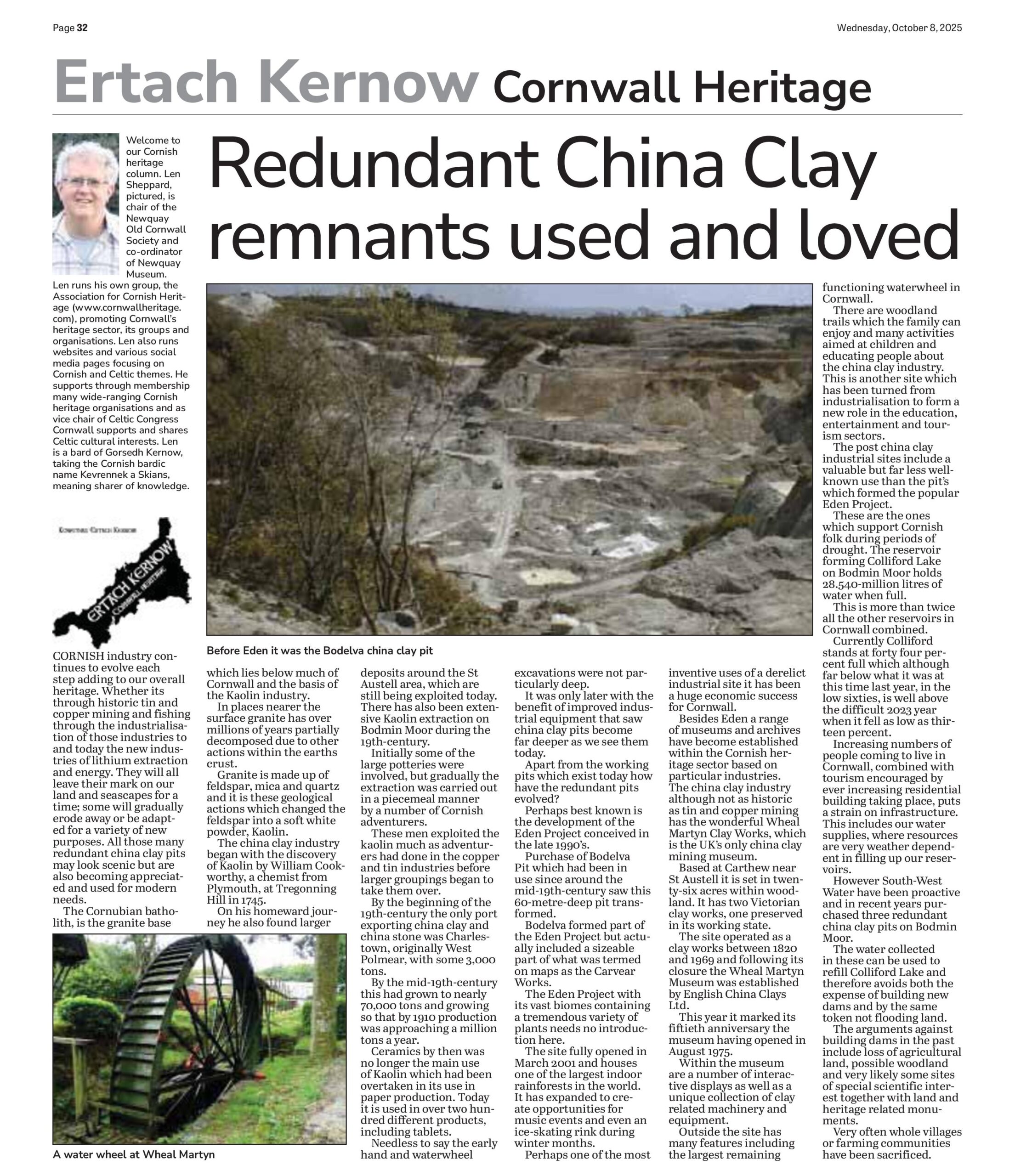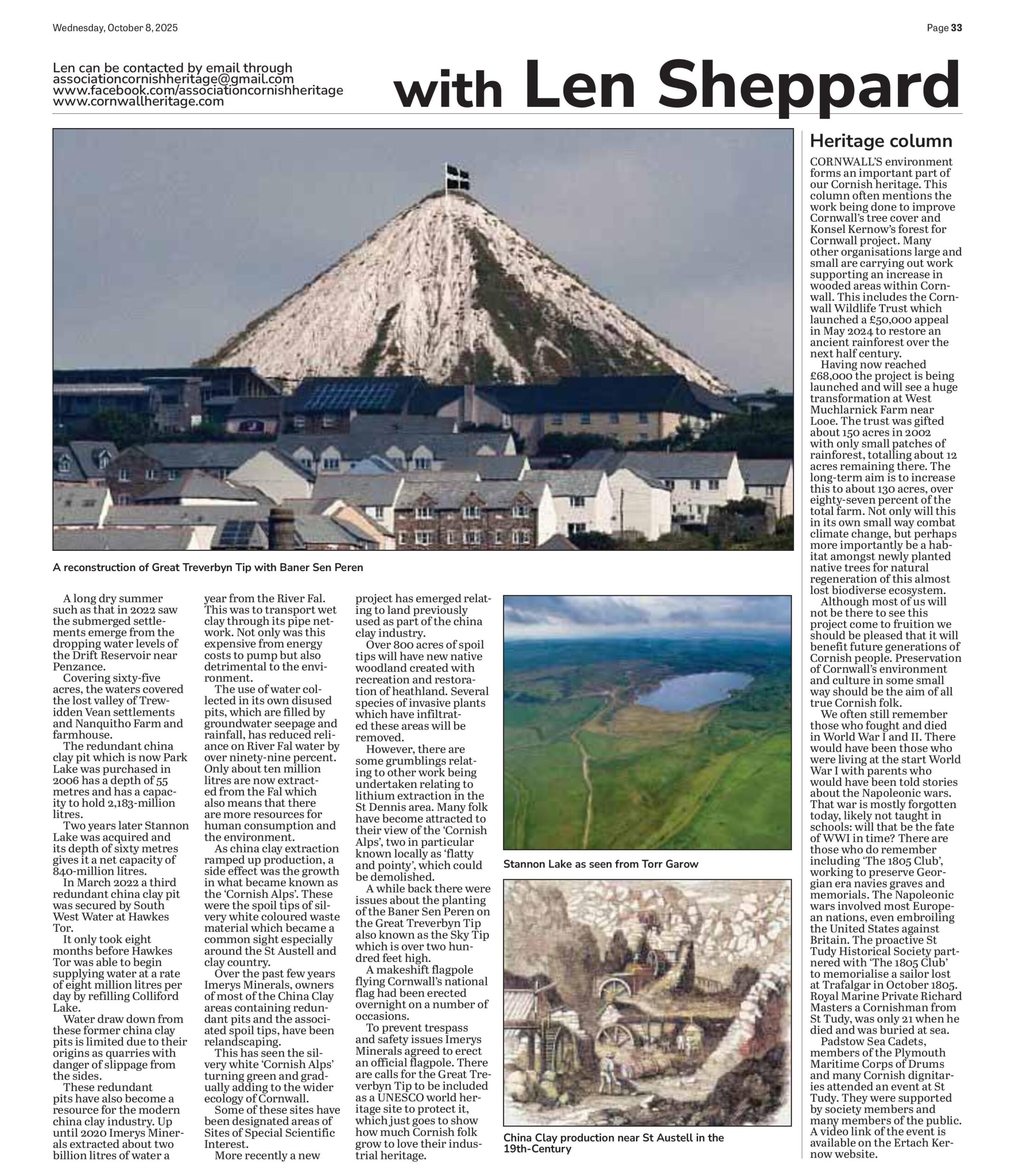Ertach Kernow - Redundant China Clay remnants used and loved
Cornish industry continues to evolve each step adding to our overall heritage. Whether its through historic tin and copper mining and fishing through the industrialisation of those industries to and today the new industries of lithium extraction and energy. They will all leave their mark on our land and seascapes for a time; some will gradually erode away or be adapted for a variety of new purposes. All those many redundant china clay pits may look scenic but are also becoming appreciated and used for modern needs.
The Cornubian batholith, is the granite base which lies below much of Cornwall and the basis of the Kaolin industry. In places nearer the surface granite has over millions of years partially decomposed due to other actions within the earths crust. Granite is made up of feldspar, mica and quartz and it is these geological actions which changed the feldspar into a soft white powder, Kaolin. The china clay industry began with the discovery of Kaolin by William Cookworthy, a chemist from Plymouth, at Tregonning Hill in 1745. On his homeward journey he also found larger deposits around the St Austell area, which are still being exploited today. There has also been extensive Kaolin extraction on Bodmin Moor during the 19th century.
Thank you for reading the online version of the Ertach Kernow weekly articles. These take some 12 hours each week to research, write and then upload to the website, and is unpaid. It would be most appreciated if you would take just a couple of minutes to complete the online survey marking five years of writing these weekly articles. Many thanks.
Click the link for survey: Ertach Kernow fifth anniversary survey link
As always click the images for larger view
Initially some of the large potteries were involved, but gradually the extraction was carried out in a piecemeal manner by a number of Cornish adventurers. These men exploited the kaolin much as adventurers had done in the copper and tin industries before larger groupings began to take them over. By the beginning of the 19th century the only port exporting china clay and china stone was Charlestown, originally West Polmear, with some 3,000 tons. By the mid-19th century this had grown to nearly 70,000 tons and growing so that by 1910 production was approaching a million tons a year. Ceramics by then was no longer the main use of Kaolin which had been overtaken in its use in paper production. Today it is used in over two hundred different products, including tablets.
Needless to say the early hand and waterwheel excavations were not particularly deep. It was only later with the benefit of improved industrial equipment that saw china clay pits become far deeper as we see them today. Apart from the working pits which exist today how have the redundant pits evolved? Perhaps best known is the development of the Eden Project conceived in the late 1990’s. Purchase of Bodelva Pit which had been in use since around the mid-19th century saw this 60-metre-deep pit transformed. Bodelva formed part of the Eden Project but actually included a sizeable part of what was termed on maps as the Carvear Works.
The Eden Project with its vast biomes containing a tremendous variety of plants needs no introduction here. The site fully opened in March 2001 and houses one of the largest indoor rainforests in the world. It has expanded to create opportunities for music events and even an ice-skating rink during winter months. Perhaps one of the most inventive uses of a derelict industrial site it has been a huge economic success for Cornwall.
Besides Eden a range of museums and archives have become established within the Cornish heritage sector based on particular industries. The china clay industry although not as historic as tin and copper mining has the wonderful Wheal Martyn Clay Works, which is the UK's only china clay mining museum. Based at Carthew near St Austell it is set in twenty-six acres within woodland. It has two Victorian clay works, one preserved in its working state. The site operated as a clay works between 1820 and 1969 and following its closure the Wheal Martyn Museum was established by English China Clays Ltd. This year it marked its fiftieth anniversary the museum having opened in August 1975. Within the museum are a number of interactive displays as well as a unique collection of clay related machinery and equipment.
Outside the site has many features including the largest remaining functioning waterwheel in Cornwall. There are woodland trails which the family can enjoy and many activities aimed at children and educating people about the china clay industry. This is another site which has been turned from industrialisation to form a new role in the education, entertainment and tourism sectors.
The post china clay industrial sites include a valuable but far less well-known use than the pit’s which formed the popular Eden Project. These are the ones which support Cornish folk during periods of drought. The reservoir forming Colliford Lake on Bodmin Moor holds 28.540 million litres of water when full. This is more than twice all the other reservoirs in Cornwall combined. Currently Colliford stands at forty four percent full which although far below what it was at this time last year, in the low sixties, is well above the difficult 2023 year when it fell as low as thirteen percent. Increasing numbers of people coming to live in Cornwall, combined with tourism encouraged by ever increasing residential building taking place, puts a strain on infrastructure. This includes our water supplies, where resources are very weather dependent in filling up our reservoirs.
However, South-West Water have been proactive and in recent years purchased three redundant china clay pits on Bodmin Moor. The water collected in these can be used to refill Colliford Lake and therefore avoids both the expense of building new dams and by the same token not flooding land. The arguments against building dams in the past include loss of agricultural land, possible woodland and very likely some sites of special scientific interest together with land and heritage related monuments. Very often whole villages or farming communities have been sacrificed. A long dry summer such as that in 2022 saw the submerged settlements emerge from the dropping water levels of the Drift Reservoir near Penzance. Covering sixty-five acres, the waters covered the lost valley of Trewidden Vean settlements and Nanquitho Farm and farmhouse.
The redundant china clay pit which is now Park Lake was purchased in 2006 has a depth of 55 metres and has a capacity to hold 2,183 million litres. Two years later Stannon Lake was acquired and its depth of sixty metres gives it a net capacity of 840 million litres. In March 2022 a third redundant china clay pit was secured by South West Water at Hawkes Tor. It only took eight months before Hawkes Tor was able to begin supplying water at a rate of eight million litres per day by refilling Colliford Lake. Water draw down from these former china clay pits is limited due to their origins as quarries with danger of slippage from the sides.
These redundant pits have also become a resource for the modern china clay industry. Up until 2020 Imerys Minerals extracted about two billion litres of water a year from the River Fal. This was to transport wet clay through its pipe network. Not only was this expensive from energy costs to pump but also detrimental to the environment. The use of water collected in its own disused pits, which are filled by groundwater seepage and rainfall, has reduced reliance on River Fal water by over ninety-nine percent. Only about ten million litres are now extracted from the Fal which also means that there are more resources for human consumption and the environment.
As china clay extraction ramped up production, a side effect was the growth in what became known as the ‘Cornish Alps’. These were the spoil tips of silvery white coloured waste material which became a common sight especially around the St Austell and clay country. Over the past few years Imerys Minerals, owners of most of the China Clay areas containing redundant pits and the associated spoil tips, have been relandscaping. This has seen the silvery white ‘Cornish Alps’ turning green and gradually adding to the wider ecology of Cornwall. Some of these sites have been designated areas of Sites of Special Scientific Interest. More recently a new project has emerged relating to land previously used as part of the china clay industry. Over 800 acres of spoil tips will have new native woodland created with recreation and restoration of heathland. Several species of invasive plants which have infiltrated these areas will be removed.
However, there are some grumblings relating to other work being undertaken relating to lithium extraction in the St Dennis area. Many folk have become attracted to their view of the ‘Cornish Alps’, two in particular known locally as ‘flatty and pointy’, which could be demolished. A while back there were issues about the planting of the Baner Sen Peren on the Great Treverbyn Tip also known as the Sky Tip which is over two hundred feet high. A makeshift flagpole flying Cornwall’s national flag had been erected overnight on a number of occasions. To prevent trespass and safety issues Imerys Minerals agreed to erect an official flagpole. There are calls for the Great Treverbyn Tip to be included as a UNESCO world heritage site to protect it, which just goes to show how much Cornish folk grow to love their industrial heritage.
Heritage Column
Heritage in the News online links:
https://www.youtube.com/watch?v=4m6cnS6SNPI&list=PLZHZAnTCaF9-YGNd2fH9lGC3evjhaQ2pp&index=1&t=40s

